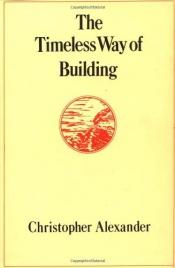The Timeless Way of Building
Resumen
The Timeless Way of Building is a 1979 book by Christopher Alexander that proposes a new theory of architecture that relies on the understanding and configuration of design patterns. Although it came out later, it is essentially the introduction to A Pattern Language and The Oregon Experiment, providing the philosophical background to the Center for Environmental Structure series.It has had a huge influence on creative thinking, especially in the areas of architecture and software design.
In the book, Alexander introduces the concept of the "quality without a name", and argues that we should seek to include this nameless quality in our buildings. Alexander attempts to define the idea by surrounding it with existing concepts that reflect a part of the quality with no name but are not sufficient to define it individually.
The book's format is somewhat unusual. It is written as a long series of italicized headlines followed by short sections providing more detail; as Alexander suggests in the foreword, the 552-page book can be read in an hour by only reading the headlines, which frame the book's argument.

 Español
Español English
English Deutsch
Deutsch










Reseñas de los usuarias/os Escribe tu propia reseña
Sé el/la primera/o en reseñar
Log inir al comentario